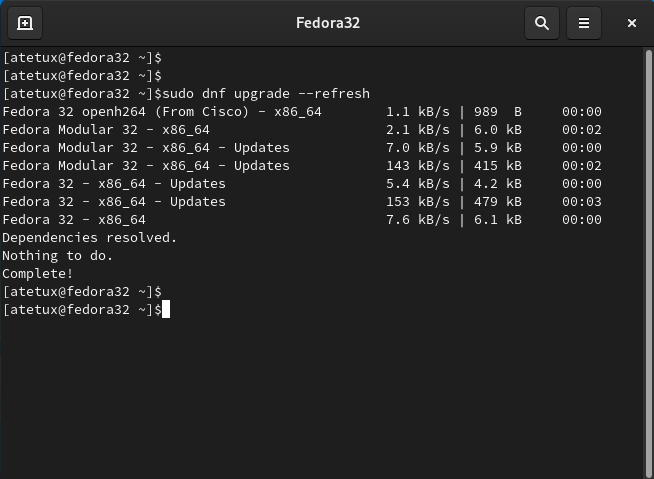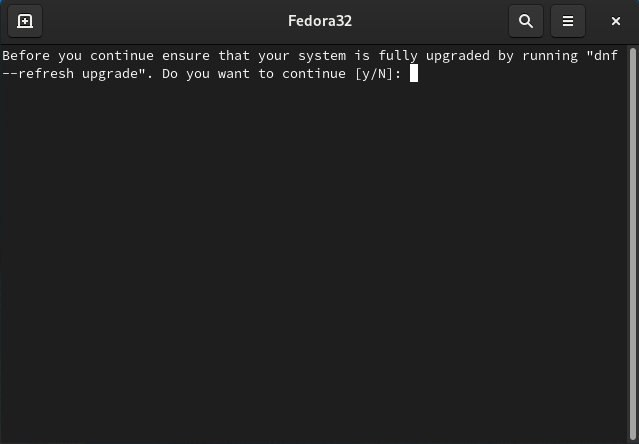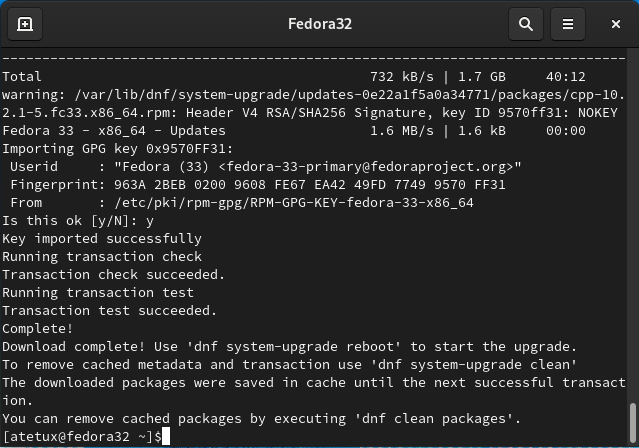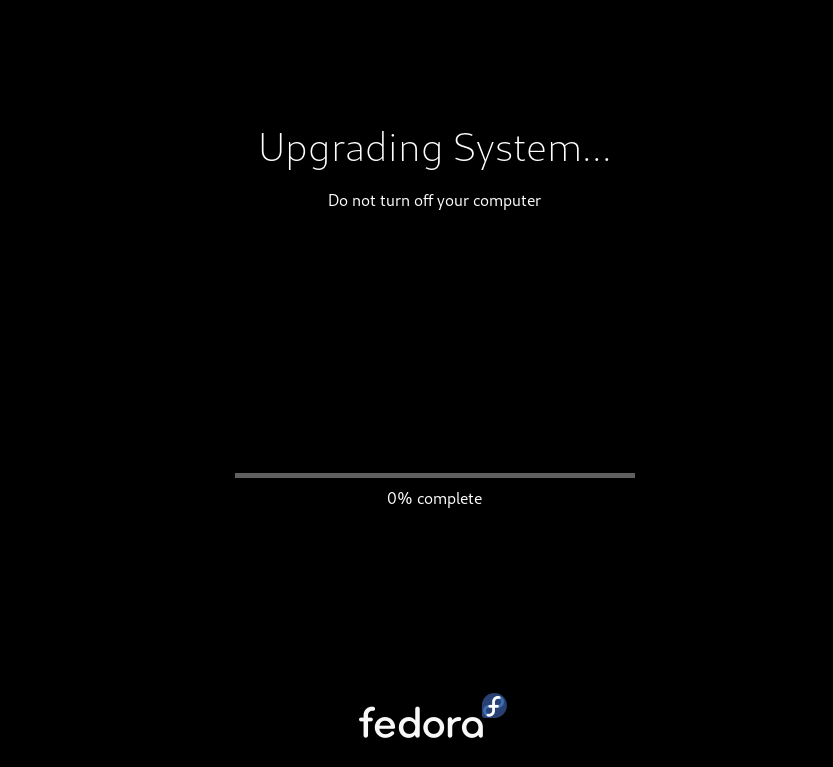Fedora 33 just released today, if you preferred using the latest and the greatest version of Fedora right away, Fedora had a dnf plugin to upgrade the system without much hassle. I’ve been done this a few times, it always smooth when upgrading between version. If you had a third party repository delete all of them first, and then install them later.
Fedora 33 features :
– BTRFS file system by default (if upgrading from other versions, the current file system will stay)
– JAVA 11
– GNOME 3.38
– systemd-resolved enabled by default
– nano is the default text editor.
– Python 3.9
– Docker is not supported yet (use podman as an alternative).
Performing Updates
Time to do the upgrade, it might take an hour or more to depend on the harddisk and internet speed.
1. Update the current system to the latest version
sudo dnf upgrade --refresh
Since I regurally update my system there wont any update, in your case if there’s update, install all of them then reboot the computer.

2. Install dnf-plugin-system-upgrade
sudo dnf install dnf-plugin-system-upgrade

3. Download upgraded version
sudo dnf system-upgrade download --refresh --releasever=33
When asked “Before you continue ensure that your system is fully upgraded by running “dnf –refresh upgrade”. Do you want to continue [y/N]: ” enter y. To start downloading Fedora 33 packages.

Wait a minute or more until dnf has done checking what needs by your system. When asked “DNF will only download packages, install gpg keys, and check the transaction.
Is this ok [y/N]: y” enter y

Accept the new GPG Key, because Fedora use different key for every release.

4. Upgrade system
The next step is to upgrade the system, remember to save and close everything before rebooting your computer.
sudo dnf system-upgrade rebootThis process will installing all Fedora 32 packages after booting which may take sometimes to finish.

After booting, clean all metadata and cached leftover from the previous upgrade process.
sudo dnf system-upgrade clean